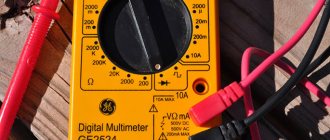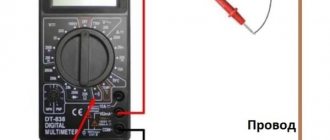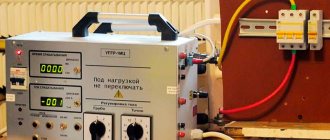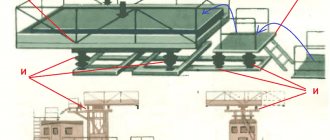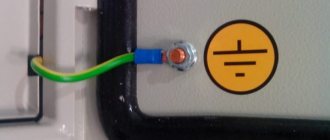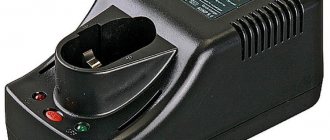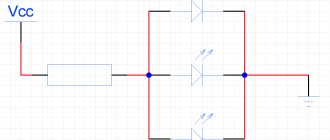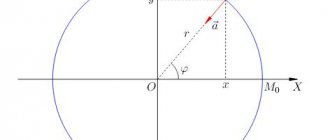Burning electrical installations that are energized are the most complex extreme situation, which falls into the category of “extreme emergency.” Therefore, there is a rule that states that it is necessary to extinguish electrical installations, as well as electrical cable distribution, only after they have been completely de-energized. And this is not always possible, because the first reaction to a fire is the most effective. The faster the fire is put out, the fewer unpleasant consequences there will be. Therefore, the question of which fire extinguisher can be used to extinguish electrical installations is heard more often than others today.
Requirements for the selection of fire extinguishers
It is necessary to point out that there is a set of rules numbered 9.13130.2009, which clearly states which fire extinguisher can be used to extinguish electrical installations up to 100V and above. Here are three main points that those who are trying to understand this issue need to know.
- Powder fire extinguishers can be used to extinguish electrical installations under voltage not exceeding 1000 V.
- Carbon dioxide models can be used if electrical installations operate with voltages below 10,000 V.
- Carbon dioxide fire extinguishing agents can also be used for installations with voltages up to 1000 V, if the fire extinguishing agent contains less than 0.0006% water vapor and the substance is released at a distance of no more than 3 m.
Other fire extinguishers can be used to extinguish electrical equipment if it is completely de-energized.
But in the set of rules called “Fire Extinguishers” there are other positions that can be taken as a basis for choice.
- This document states that powder fire extinguishers can extinguish electrical installations with voltages over 1000 V. But only if the devices have been tested in accordance with two state standards numbered P51017 and P51057.
- As for carbon dioxide extinguishing agents, if the device includes a socket made of metal, then such a device cannot extinguish electrical installations under the influence of electric current.
- You can also use foam and water fire extinguishers to extinguish electrical installations under voltage up to 1000 V, if they have been tested in accordance with the GOSTs indicated above. In this case, certification of devices can only be carried out by an accredited laboratory.
Please note that all points contain a voltage value. It turns out that the choice of fire extinguishing agent will depend on whether you know what voltage this or that electrical equipment is under. That is why in production it is mandatory to indicate voltage values on equipment, switchboards, boxes, substations and transformer rooms.
Of course, the best option is to completely de-energize the installations. This makes it possible not only to use fire extinguishers of any type, but also to protect people from electric shocks, plus reduce the time it takes to extinguish a fire. But even here some positions will have to be taken into account, for example, if a fire occurred inside a room with a volume of no more than 40 m³, then there is a high probability that powder and carbon dioxide vapor will fill the space, which will affect the condition of people.
Which fire extinguishers can extinguish electrical installations up to 10,000 V: types and their application
When extinguishing electrical installations up to 10 kV, you can use fire extinguishers marked for class. E – fires of electrical installations (EF). The standard maximum use of fire extinguishers in case of fire of electrical equipment according to air safety standards is 10,000 V. Within these limits, primary fire extinguishing agents are selected according to the capabilities of the fire extinguishing agent (FEA). Specifics of fires class.
E:
- Electrical equipment may be live if it is not possible to turn off the power. This is especially true for installations up to 0.4 kV;
- risk of electric shock through fire extinguisher, conductive parts of the fire extinguisher;
- an increase in the number of short circuits due to the fire extinguishing agent;
- Not all fire extinguishing agents, except gas ones, are capable of penetrating deep into structures.
There is a need for re-processing; - combustion products are toxic.
Acts:
- SP 9.13130 – fire extinguishers, rules of use;
- RD 153-34.0-03.301-00 - not valid, but it has provisions for reference, for example, regarding distances (Table
1) the same rules are applied in practice; - PUE – general norms;
- VNIIPO manual Tactics of extinguishing electrical installations, 1986
Which fire extinguisher should you use to extinguish electrical equipment?
The main property of a fire extinguisher charge when processing electrical installations is dielectricity. The parameter is achieved by the specific composition, consistency, and quality of the jet. The powder fire extinguisher must be in the panel room up to 1 kV.
Carbon dioxide or gas devices certified for high-voltage equipment are used at the same power, as well as up to 1 - 10 kV. The marking of fire extinguishing agents must contain the letter “E”, and the voltage range is indicated separately.
Violation is fraught not only with low efficiency in suppressing a fire, but with electric shock. Each type of fire extinguisher has its own characteristics for use in case of electrical equipment fire:
| Efficiency | Kinds |
| Effective |
|
| Less effective |
|
| Ineffective |
|
| Not effective or prohibited (with reservations) |
|
Is it possible to extinguish with carbon dioxide?
An extinguishing agent consisting of carbon dioxide (CO₂, dioxide, carbon dioxide) is the standard for class fires. E. Operating principle: displacement of oxygen from the treated fire zone and critical cooling (charge at exit is -70 °C). Carbon dioxide does not conduct current. Suitable for all values up to 10 kV (according to standards) without restrictions.
It is prohibited to use carbon dioxide fire extinguishers to extinguish electrical equipment above 10,000 V (SP 9.13130, clause 4.1.9), but CO₂ is often used for them, since there are not many alternatives. OS parameters for power from 1000 V:
- jet – from 3 m;
- water vapor in OTV – up to 0.006%.
Advantages of the OU: does not leave any traces on the object, does not damage.
Cons: risk of poisoning, cold burns.
Is it possible to extinguish with powder OP?
According to SP 9.13130, restrictions for powder are up to 1 kV, and also more (usually up to 5 kV) if there is certification GOST R 51017 and R 51057. Feature: many types of powder mixtures (phosphorus-ammonium, mineral salts, sulfates, chlorides, graphite etc.). The fire extinguishing agent must be for class. E, for a specific number of volts.
Pros of OP:
- inexpensive;
- they knock down the flame well;
- versatility: they cope with other fires at the same time, for example, there are charges with the ABCE, BCDE range effective in fires of combinations of materials;
- little harmful.
Minuses:
- weakly penetrate into hard-to-reach places;
- The powder contaminates and melts.
Powder fire extinguishers are not recommended for expensive equipment (server ones). But often the damage is exaggerated: the fire extinguishing agent is simply removed with a brush, and besides, when heated by a fire, the electrical installation is critically damaged; - do not cool;
- impair visibility;
- not used with water.
Application of freon OX
The operating principle of halon fire extinguishers and their advantages are the same as those of carbon dioxide ones.
But they are better when electrical equipment catches fire for the following reasons:
- less harmful, although freons emit toxic substances at +400 °C;
- soft action - the composition when released is less cold than that of op-amps, therefore they are used for sensitive equipment;
- 1.5 – 2 times more effective;
- according to the standards, the limit for OX is 0.4 kV, or more precisely, up to 0.38 kV, but for new freons the range is practically unlimited (up to 110 kV);
- do not create static discharges.
Is it possible to use air foam and chemical foam?
The fire extinguishing agent, ORP and OCP, contains most of the water (especially the former), so they do not extinguish electrical equipment. Code of rules 9.13130 in its provisions and tab. 2 fixed this limitation, but there is a caveat. Foam fire extinguishers provide some effect only for values up to 1 kV, if they have passed tests according to GOST R 51017, R 51057, are certified and this is stated in their TD. Experts are skeptical about such extinguishing, warning that the process is carried out at your own risk.
Are air-emulsion OVEs acceptable?
The extinguishing charge of OVE contains a lot of surfactants (up to 100%). The composition includes antifreeze and solid microparticles. The composition is more dielectric than that of ORP and OCP.
The advantage of emulsion is that it creates a thick, dense fire-retarding film, enveloping surfaces and penetrating into structures, so there is no need to additionally shed the source of fire. Air-emulsion fire extinguishers extinguish electrical installations up to 1 kV.
They are definitely safer and more effective than foam ones, but the cylinder must have a finely atomized jet with a multiplicity of less than 4. The effectiveness of EVA according to table. 2 SP 9.13130 equal to powder and freon devices. In reality, they are rather closer to the former.
Extinguishing with water agents
It is prohibited to use water fire extinguishers to extinguish live electrical equipment (with clean water or with reagents up to 1%). The reservation is contained in clause 4.1.19 SP 9.13130, in table. 2 is set to “+” for an agent with a fine atomized release: TRS has a fire extinguishing range of up to 1 kV, but certification is required.
TRS is a fog directed with strong pressure, a haze with the size of the droplets and the distance between them, giving a certain level of dielectricity. It is believed that at low voltage such an OTV is not conductive, but it is appropriate in exceptional cases or for ordinary household values (up to 400 V: 220, 380 V).
Experts are as skeptical about OS with TRS as they are about ORP.
Rules for extinguishing electrical installations with a fire extinguisher
Safety standards have been strengthened due to the specific nature of fire class. E, and take into account the following:
- it is necessary to maintain a safe distance from the device;
- bell materials, nozzles;
- personal protective measures, especially in confined spaces using gas agents.
filling out the order.pdf (44.86 Kb) (downloads: 13)
What is the maximum voltage for electrical equipment that can be extinguished?
The PUE divides electrical installations into 2 types: with a power of up to 1 kV (small electrical panels) and more (in a transformer substation, at high-voltage facilities). Range of use of fire extinguishers when extinguishing live equipment:
| View | Maximum power (volts) |
| OP |
|
| OU, OH |
|
| OVE | |
| ORP, OCP |
|
| OV (with TRS) |
Closer than what distance is it not allowed to bring a fire extinguisher to a burning electrical installation?
If you do not keep the distance, there is a risk of electric shock:
- electric arc;
- through a current-carrying socket or jet;
- CO₂ is dielectric, but when released, a conductive solution of carbonic acid can form, so it is forbidden to extinguish with a metal barrel (nozzle).
You need to hold it by the insulated handle or use rubber gloves; - through a static charge.
Distance standards:
- It is always not allowed to bring it closer than 1 m to the electrical installation - this is the minimum limit;
- NB standard rules:
- 1.5 m – up to 1000 V;
2 m – from 1 to 10 kV;
- experts recommend a minimum distance of 2 - 3 m, if the length of the stream allows it.
Safety precautions when extinguishing
Precautions:
- the combination of materials is taken into account, and the fire extinguishing agent is selected for it (for example, an electrical installation burns together with fuel and lubricants);
- When using gas fire extinguishers you will need:
- personal protection in confined spaces;
evacuation of personnel before processing begins;
- will increase the effectiveness of closing ventilation and the tightness of the room;
- Non-conductive clothing (rubber galoshes, gloves) is highly recommended;
- spray jets are used;
- foam treatment occurs by filling the space around the electrical installation;
- aqueous extinguishing agents are prohibited for highly heated, molten, or reacting materials;
Source: https://proffidom.ru/596-ognetushiteli-dlya-tusheniya-ehlektroustanovok-do-10-kv.html
Extinguishing electrical wiring
There are many reasons why cables and wires burn: mechanical stress leading to a break in the insulation, voltage drop, abrasion of the insulating layer, temperature changes, etc. All this leads to a short circuit, which is a powerful impulse that leads to an increase in temperature.
Of course, the ideal solution when there is a wiring fire is to turn off the power. In this case, the cable can be extinguished not only with fire extinguishers, but also with improvised means: sand, water, soil. If it is not possible to turn off the power, then you will have to use fire extinguishing devices: carbon dioxide, if the voltage in the wire is more than 1000 V, powder, if less than this indicator.
Attention! Do not extinguish the flames of a burning wire or cable with a foam fire extinguisher. Because foam, when interacting with plastic, begins to release toxic chemical reaction products into the surrounding air.
Extinguishing the electrical panel
An electrical control room is a separate small room where a distribution cabinet (or switchboard) is located, which is the source of electricity. The electrical panel equipment includes switches, disconnectors, a bus system and measuring instruments. Access to the electrical control room should be limited and provided only to personnel with special permission.
If a fire occurs in the electrical room, the first step is to turn off the power. Then, as in other cases, you can use any fire extinguishers. Otherwise, the choice falls on carbon dioxide or fire extinguishing powder.
However, it should be remembered that the action of water can have a detrimental effect on the operation of electrical equipment, and the powder, when it gets on hot surfaces, can fuse with them, which also leads to equipment failure.
Source
Extinguishing electrical equipment
Electrical installations are not much different from electrical equipment in terms of fire safety. Therefore, the same rules are used here, and the answer to the question of what fire extinguishing agents can be used in electrical installations up to and above 1000 volts remains the same.
The only thing that should be noted is that electrical equipment for industrial use, which includes all kinds of generators, transformers, and reactor plants, is usually provided with automatic fire extinguishing systems. They are immediately triggered if the specified parameters change in the electrical network of the equipment. At the same time, the power to electrical installations is automatically turned off. That is, everything here is as safe as possible.
It’s another matter if you have to extinguish electrical equipment yourself. Therefore, in this case, it is important to know which fire extinguishers can be used to extinguish electrical equipment. The principle of choice is still the same, namely in accordance with the rules that were outlined above. There are no other selection criteria.
How to extinguish electrical wiring - short circuit, cause of wiring fire
The occurrence of a powerful and destructive current pulse in the network is called a short circuit. It occurs at the moment when the wires of the circuit are connected, but the current does not flow into electrical appliances. The wiring heats up and starts a fire. If sparking or open flame appears, turn off the electricity immediately. If access to the plugs is impossible, the wires must be cut off with any electrically insulating tool. The first signs of a future short circuit may be interruptions in the operation of lighting and electrical appliances. They should be checked for integrity of wires and contacts. There is current in the burning live wiring, so if it is not possible to turn off the panel or cut the wires, you must call the fire department.
Extinguishing burning electrical wiring Extinguishing live electrical wiring with water is prohibited. Water is an ideal conductor of current and a person who pours water on the wiring is guaranteed to receive an electric shock. If the network is de-energized, then you can use water, sand or any fire extinguisher at hand. If it is not possible to turn off the power, you can only use a fire extinguisher that is marked on the body that it can be used for class E fires. This classification corresponds to fires in electrical installations. To extinguish fires in electrical installations, some powder and aerosol extinguishing agents are used. They are designed for extinguishing wiring and electrical installations under voltage of no more than 1000 volts (optimally about 300 volts). If higher voltage is present, it is necessary to look for ways to de-energize the network. It is impossible to use foam-air and foam-chemical compositions under voltage. In winter, you can try to extinguish burning external electrical wiring with snowballs. They will cause short circuits and trigger the network’s protective mechanism.
How to extinguish an electrical panel
Let's start with the fact that a switchboard is a small room in which areas for supplying, monitoring and managing all electrical networks within the facility are grouped. In apartment buildings, an analogue is the distribution board located on the staircase. Everyone knows what it includes. Industrial switchboards are not much different from this one, it’s just that this room is more saturated with various devices and electrical devices. By the way , entry into it for persons who do not have access is prohibited.
So, what kind of fire extinguishers should be in the electrical room. Everything will again depend on the voltage that powers the object, and which is distributed through the panel compartment. If it is no more than 1000 volts, then powder models are suitable; if it is over 1000V, then carbon dioxide models must be used.
Emergency Procedure
In the event of an emergency, you must act in the following order:
- completely disconnect the wiring;
- begin to extinguish the fire using available means, the choice of which depends on the characteristics of the object;
- in case of a large scale disaster - call the fire department, we will inform you of the exact address, floor, entrance procedure;
- meet representatives of the fire department, indicating the location of the fire.
If we are talking about a production facility, an employee who witnessed a fire must report this to his management in order to organize prompt measures to prevent an emergency.
Also read: What is pitch voltage
To ensure safe operation, the consumer is obliged to exclude abnormal use of electrical appliances and ensure that the wiring is in good condition. It is important to regularly check the tightness of the connections, the absence of heating of the wires and the serviceability of sockets, switches and other switching devices.
The necessary fire extinguishing equipment must be available and in working order at the facility. Next - about the choice of fire extinguishers used to extinguish electrical fires.

